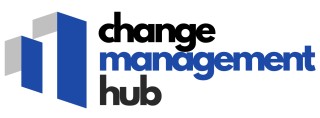-large-teaser.webp)
Defining the Roles
Key Distinctions and Common Ground
When delving into project management within the realm of agile methodologies, understanding the distinct roles and overlap between a Product Owner and a Business Analyst becomes crucial. Both roles are integral to the product development lifecycle, yet they serve distinctly different purposes in guiding a project toward success.
Product Owner Insight
The Product Owner in a scrum environment leads the charge in creating and refining the product backlog. They are constantly involved with the development team, ensuring the product vision is being translated into user stories that achieve the intended outcomes. The Product Owner acts as a bridge between the stakeholders and the development team, maintaining a balanced focus on both the priorities of the customer and the functionality of the product.
Business Analyst Expertise
On the other hand, the Business Analyst dives deeper into the business requirements, performing in-depth analysis to identify the products and processes that need improvement. Their role often extends beyond agile projects, focusing on gathering and analyzing data to support decision making, and aligning the project goals with business objectives. Business Analysts act not only as analysts but also as advisors, supporting the project manager with informed insights as the project progresses.
Both roles require a keen understanding of the project lifecycle and must collaborate closely with development teams. Their effectiveness relies on their ability to communicate ideas clearly and their agility to adapt to changing project scopes. While the Product Owner steers the product direction, the Business Analyst ensures that the underlying data and processes align efficiently with business goals.
Skills and Competencies
Essential Competencies in Agile Environments
In the realm of product development and management, skills and competencies play a pivotal role in determining the success of a project or initiative. Both product owners and business analysts possess unique skill sets tailored to their specific roles, yet there are overlaps that enhance team synergy in agile business environments.
Product Owners: Visionaries and Decision-Makers
Product owners are expected to have finely honed decision-making skills. Their responsibilities revolve around articulating the product vision and ensuring it aligns with the development team's efforts. This involves managing the product backlog, prioritizing user stories, and making pivotal decisions that impact the overall direction of software development.
To effectively steer scrum teams, product owners must possess a deep understanding of project management techniques and the ability to communicate requirements clearly to ensure every team member is on the same page. Data-driven decision-making is another critical skill, especially in industries where data science offers insights into user needs and market trends.
Business Analysts: Mastering Analysis and Communication
On the other hand, business analysts are the bridge between stakeholders and development teams. Their expertise lies in analysis and requirements gathering to translate business needs into actionable tasks. They must excel in understanding and documenting detailed business requirements, as well as evaluating possible solutions to align with those needs.
The role also demands strong interpersonal and communication skills, enabling analysts to liaise with various departments and ensure the seamless integration of project objectives. Certifications in business analysis can equip analysts with methodologies to manage complex projects effectively, further enhancing their role as key contributors to successful change management initiatives.
Both roles require continual learning and adaptation, especially in agile and scrum contexts. For those interested in how agile ceremonies fit into this framework, explore more about agile ceremonies in change management.
Collaboration in Change Management
Effective Coordination for Successful Change
In the realm of change management, collaboration between product owners and business analysts is pivotal. This partnership is particularly crucial in agile environments where projects often pivot based on evolving user stories and dynamic business requirements. Working together, product owners and business analysts ensure that customer needs align seamlessly with the priorities of the development team. The product owner, entrusted with the product vision, guides the direction of the project by spearheading the development of the product backlog, while the business analyst helps in the analysis, ensuring detailed and comprehensive requirements are articulated.- Alignment on Product Vision: Business analysts serve as the bridge between stakeholders and the scrum team. By translating business data into actionable insights, they empower product owners to make informed decisions that shape the project’s direction.
- Refinement of Requirements: An adept business analysis leads to clarity in requirements which is indispensable for product development. Business analysts leverage their analytical skills to provide insights that refine and adjust the product backlog items. This aids in avoiding miscommunications and errors when defining features for the development team.
- Joint Planning Sessions: Collaborative planning sessions, facilitated by scrum masters, are stages where both roles jointly contribute to defining the scope and prioritization of tasks. The inputs from business analysts during these sessions ensure that all user requirements are meticulously captured and examined for feasibility.
- Addressing Challenges: During phases of project management, both roles mobilize their expertise to address challenges. For instance, agile business practices often require swift adaptability to changes, an area where both the product owner’s decision-making capabilities and the business analyst's analytical insights become essential.
Challenges Faced by Product Owners
Navigating Complexities: Product Owners in the Agile Landscape
Product owners play a vital role in software development, particularly within agile frameworks like Scrum. While balancing their responsibilities, product owners face several challenges inherent to their role. One key challenge is maintaining a clear and compelling product vision that aligns with stakeholder requirements and the development team’s capabilities. This requires excellent communication skills and an in-depth understanding of market trends and user needs. Another challenge lies in managing the product backlog. Prioritizing features and user stories to ensure that the development team delivers maximum value with limited resources can be demanding. Product owners must possess strong decision-making skills to evaluate competing priorities and make informed choices, often under time constraints. The agile business environment is dynamic and fast-paced, which can pose difficulties in keeping the team aligned with the ever-evolving goals and demands of the project. Moreover, product owners often work closely with scrum masters and development teams to facilitate effective collaboration and continuous improvement. Achieving this synergy requires a keen understanding of agile principles and practices. Lastly, product owners may find it challenging to balance the technical and business aspects of product development. They need a solid grasp of business analysis and data science to make data-driven decisions that contribute to the project’s success. This includes tracking key performance indicators and analyzing data to inform strategy adjustments.Challenges Faced by Business Analysts
Unique Challenges Encountered by Business Analysts
In the dynamic environment of change management, business analysts play a pivotal role in bridging gaps between development teams and stakeholder expectations. As these professionals dive into business requirements and user stories, they face a range of challenges that can affect the overall success of a project.- Clarity in Requirements: One of the most significant challenges for business analysts is ensuring that requirements are clearly defined and understood by all parties involved. Given the impact that these requirements have on product development, any ambiguity can lead to costly rework and misalignment with the product vision.
- Stakeholder Alignment: Business analysts must often manage divergent stakeholder interests and priorities. This can create complexity when trying to gather consensus on the project’s scope and the specific features that need prioritizing.
- Data-Driven Decisions: Analyzing data effectively is crucial for business analysts. Leveraging data science and analysis to inform decision-making processes is vital, yet can be challenging without robust data and effective tools in place.
- Adapting to Agile Environments: As agile methodologies dominate software development, business analysts must adapt to new roles and responsibilities like collaborating closely with product managers and product owners. They need to be agile themselves, able to rapidly pivot and redefine priorities as situations change.
- Continuous Skill Development: The evolving nature of technology mandates that business analysts keep their skills up to date. Achieving relevant certifications and enhancing competencies in areas such as project management, product backlog refinement, and collaboration tools is often essential for maintaining effectiveness within their roles.













